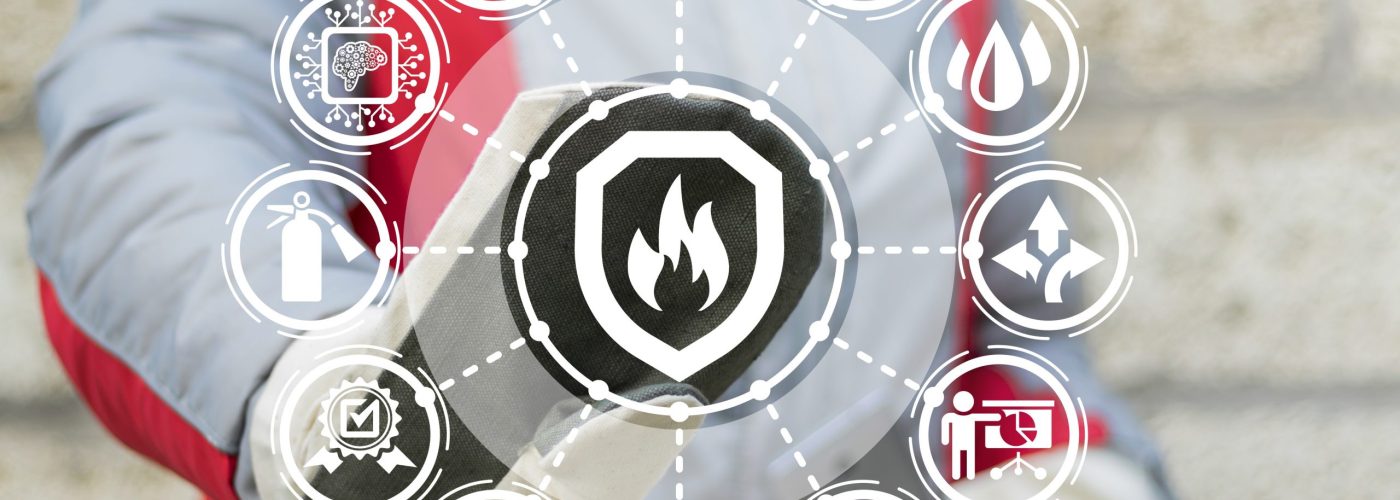The COVID-19 pandemic has drastically altered how we live, work, and do business. With health protocols requiring work-from-home schemes and social distancing requirements for office environments, conducting training can be quite tricky as you need to ensure competencies are met without compromising the health of the participants.
Safety training becomes even more challenging since it sits right in the intersection between necessary and potentially delayed due to the pandemic. But fires are still dangerous, and regulations in place to preserve safety must continue, so the need for fire evacuation drills can’t be put on hold.
The use of immersive technologies, such as virtual reality (VR), serves to address this imperative and poses many advantages in line with existing measures against the virus.
Virtual Reality in Fire Safety Training
Fire evacuation drills often entail convening people to a designated venue so that social distancing can be problematic if not impossible. Aside from this, additional training regarding fire safety can be hampered considering the implementation of work-from-home arrangements and restricted hours in the office. The conduct of routine fire safety training may even become a burden to a small skeletal building workforce or completely inaccessible to those who are working in other regions.
Virtual reality training, like SafetyNet VR offered by AK Preparedness, can address these concerns. Its technology allows for practice to continue despite everyone not being in the same location. VR fire safety drills can act as a tool in continuing fire safety for establishments as it only requires, at minimum, smartphone and internet capabilities to simulate fire scenarios. The above-mentioned benefits of immersive technologies can be readily transplanted into fire safety education to produce the same outcomes.
VR fire drills allow businesses to conduct fire safety education by ensuring that employees are given first-hand education not just in where to go but become well-versed in using fire alarms and fire extinguishers. In the simulation, users can click on life safety equipment as well as hear instructions for evacuation while navigating the building.
The safety drill can be accessed anytime and anywhere that time and location are not hindrances to continuing fire safety education. SafetyNetVR also serves as a cost-effective tool that not only provides means for employees to gain essential information in the event of a fire, but also to heighten their response in case of an emergency.
The use of VR fire safety drills is not only beneficial to employees and office personnel—this can also be used to educate residential building occupants without requiring them to step out of their units or calling them to gather at a specific location. Given the changes that will continue in construction and high-rise living spaces that call for more people living in ‘denser environments,’ technologies such as VR fire safety training can provide due rewards for both tenants and building owners.
Advantages in VR Fire Safety Training
Virtual reality allows participants to gain first-hand experience in real-life situations. It is multi-sensory and accurate, making it a remarkable experience. Studies on this immersive technology have also shown its benefits for the corporate world, most notably in delivering fire safety training because of the following advantages:
- Creates an engaging learning environment: fire safety drills that use immersive technologies employ real-life situations and engage actual emotions and responses. It serves to inform employees and occupants of the fire evacuation plan as well as allow them to navigate their way and use fire prevention tools for safety.
- Accounts for all possible scenarios: simulations not only portray ordinary fire circumstances, but they also allow for ‘impossible’ situations to prepare participants in the occurrence of such disaster.
- Practical hands-on training: VR fire safety training operate with the hands-on principle by teaching personnel how things are actually done.
- Allows mistakes without suffering consequences: mistakes can be costly in real-life fire situations as it can cost lives and severe property damage. Virtual reality settings allow trainees to commit errors and encourage them to learn from them without causing injury.
- Improve employee performance: fire safety training operates on a series of levels that can be unlocked whenever a task is accomplished. It also has built-in metrics to measure the depth of learning and response of every participant.
- Reduce training costs: virtual reality training do away with expensive locations and equipment, resulting in more significant savings.
- Remote implementation: training can be accessed with minimal smartphone and internet capabilities and can be accessed at the user’s convenience.
- Safety: perhaps the greatest advantage of VR is that of long-term safety—not only in preventing risks that may come from actual demonstrations, but also to the health of its learners.
VR as an Emerging Trend in Fire Safety Education
Virtual reality is an innovative way of offering continuing education at this crucial time. It has found relevance in training employees despite restrictions on health and movement—those engaged in ensuring office safety would do well to include virtual reality training as part of their occupational safety plan.
Virtual reality fire safety drills are not only applicable to workers. It can also be integrated into familiarization tours with tenants and occupants of high-rise buildings to ensure that everyone is knowledgeable in case a fire occurs. VR training is both time and cost-efficient, making them a welcome addition to an existing fire safety plan for any business.
As an integral part of a new mode of training brought about by the circumstances surrounding the pandemic, virtual reality allows for participants to undergo fire safety training without sacrificing their well-being and other’s health. Immersive technologies enable learners to engage in a realistic setting that not only familiarizes them with actual fire scenarios, but it also allows for measuring individual performance in accomplishing tasks that can spell the difference between survival and fire casualty.





